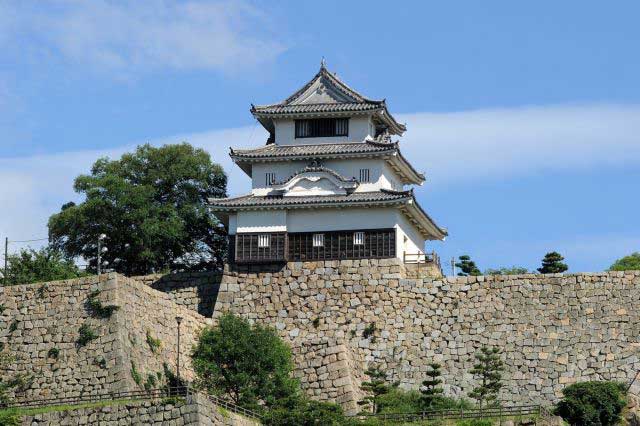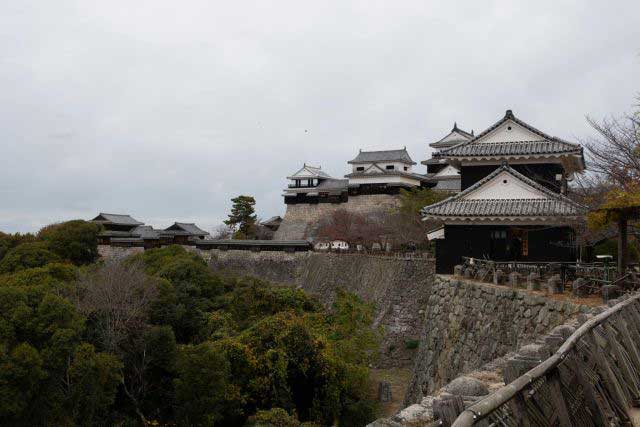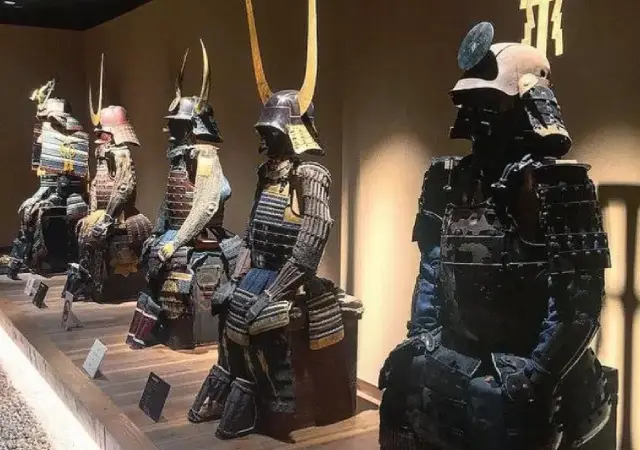
Gifu Castle, once known as Inabayama Castle, has stood as a symbol of Gifu City and a hallmark of the tumultuous Sengoku period for over eight centuries. Initially constructed by the Nikaido clan around 1201, it underwent expansions and fortifications by influential daimyo such as the Saito clan of Mino and the Oda clan of Owari.
Perched atop the formidable Mt. Kinka, formerly Mt. Inaba, the castle's strategic location, standing 329 meters tall, commanded a view over the surrounding landscape, with the Nagara River flowing below, serving as a natural moat. Despite its reputation as an impregnable fortress, Gifu Castle fell to a mere sixteen samurai in a surprising turn of events.

The mastermind behind this audacious conquest was Takenaka Hanbei, military advisor to the castle lord, Saito Tatsuoki. Despite his frail appearance, Hanbei's tactical genius proved formidable. Incensed by a humiliating incident where a samurai of Gifu Castle insulted him, Hanbei orchestrated a clever ruse, leading to Tatsuoki's panicked retreat and the castle's swift capture.
Subsequently, Oda Nobunaga, having heard of Hanbei's feat, requested possession of the castle, but Hanbei, loyal to his lord, returned control to Tatsuoki before departing from service. However, Gifu's fortunes continued to fluctuate. Nobunaga later seized the castle in 1567, reinforcing it as a pivotal stronghold in his quest to unify Japan.

Under Nobunaga's rule, Gifu Castle underwent significant renovations, boasting the nation's first official castle tower, or tenshu. While the mountain peak housed a watchtower, the main castle complex sprawled at the base, featuring a grand four-story golden palace and expansive gardens, a testament to Nobunaga's opulence and power.
Portuguese Jesuit Missionary Fr. Louis Frois praised Gifu's prosperity, dubbing it a "bustling Babylon" and highlighting its significance in trade and commerce. However, Gifu's glory was short-lived. Damaged in the lead-up to the Battle of Sekigahara, the castle faced further destruction at the hands of Tokugawa forces, culminating in its dismantlement by Tokugawa Ieyasu in 1601 to deter dissent.
Despite successive reconstructions, including a concrete replica built in 1956, Gifu Castle's legacy endures through ongoing research and restoration efforts. Recent discoveries shed light on its architectural intricacies, offering insights into Nobunaga's vision and strategic prowess, ensuring that the castle's story remains a captivating chapter in Japanese history.
Siehe auch
-
Aizu-Wakamatsu Castle

Aizu-Wakamatsu is the most powerful and at the same time the oldest castle in the Tōhoku region in the north of Honshu Island. Its history begins in the 14th century and is closely connected with the Ashina clan, whose members claimed descent from the legendary Taira family.
-
Maruoka Castle

Maruoka Castle is located in the central part of the former city of Maruoka, which is now part of the city of Sakai. This area lies in the northeastern part of Fukui Prefecture. The castle was built on the bank of the Kuzuryu River, on the side opposite Fukui City, which once served as the administrative center of the former Echizen Province. Thanks to its location, Maruoka held significant strategic importance, as it controlled two major routes at once: the Hokurikudo highway leading from Kaga Province and the Mino Kaido road connecting these lands with Mino Province.
-
Marugame Castle

Marugame is part of the so-called “Authentic Dozen,” a group of twelve castles whose donjons have survived to the present day without major reconstructions since the Edo period.
-
Iyo Matsuyama Castle

Historically, the center of Iyo Province—corresponding to today’s Ehime Prefecture on the island of Shikoku—was the city of Imabari, while the Matsuyama area was regarded as an agricultural hinterland with broad plains and low hills. During the Muromachi period, the central part of the province was governed by the Kano clan from Yuzuki Castle. With the onset of the Sengoku period, however, this clan lost its former influence and was forced to survive in the shadow of the more powerful Mori and Chōsokabe clans. After Toyotomi Hideyoshi’s forces conquered Shikoku in 1587, the northern part of Iyo Province was granted to Fukushima Masanori, one of the so-called “Seven Spears of Shizugatake.” In 1595, Masanori was transferred to Kiyosu Castle, and the lands around Matsuyama were given to another of the Seven Spears, Katō Yoshiaki, who received Masaki Castle and an income of 60,000 koku of rice.
-
Kanazawa Castle

Construction of Kanazawa Castle began in 1580 on the orders of Sakuma Morimasa, a vassal of Oda Nobunaga. The castle was built on the site of the Ikko-ikki sect's Oyama Gobo temple, which is why it is sometimes called Oyama Castle. Morimasa managed to build several moats and begin construction of a castle town. However, after his defeat at the Battle of Shizugatake in 1583, he was executed, and ownership of the castle passed to Maeda Toshiie (1538–1599).
-
Nakatsu Castle

Kuroda Yoshitaka (1546–1604) was one of the closest advisors to the legendary military commander Toyotomi Hideyoshi. He took part in key military campaigns of the late 16th century, including the campaign against Shikoku in 1585 and the campaign against Kyushu in 1587. Later, during the second campaign in Korea, Yoshitaka served as chief advisor to the commander of the invasion forces, Kobayakawa Hideaki. After Hideyoshi's death, he swore allegiance to Tokugawa Ieyasu, thereby securing his influence and patronage under Japan's new leader.
-
Edo Castle

The history of Edo Castle dates back to the Heian period, when the Edo clan built a small fort on this site. In 1457, the vassal of the Uesugi clan, Ota Dokan (1432–1486), constructed a full-scale castle here. Internal conflicts weakened the Uesugi clan, and in 1524, Ota Dokan’s grandson, Ota Yasutaka, surrendered the castle without resistance to the forces of Hojo Soun, the ambitious leader of the Hojo clan. While Odawara Castle remained the clan's main stronghold, Edo was considered a key strategic fortress.
-
Samurai Museum Shinjuku

Situated in the vibrant district of Shinjuku, the museum showcases an extensive collection of samurai armor, weapons, and cultural artifacts spanning from the Kamakura to the Edo period. The exhibits aim to convey the samurai's unwavering commitment to honor and discipline, reflecting how their spirit continues to influence modern Japanese culture.

